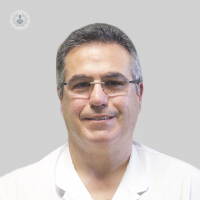Dysphonia: Causes, Symptoms and Treatment
Written by:Dysphonia is any alteration that occurs in the emission of perceived speech by the patient and / or their environment. In the non-speaking medical field often mistakenly hoarse voice hoarseness or even from the strict point of view this would represent a total loss of voice.

Causes, symptoms and treatments dysphonias
The causes may be several, from the common cold to tumor lesions, but fortunately the most common cause is an inflammation of the vocal cords because of a vocal overexertion (scream, sing, etc.) or an infection of upper airway affecting the larynx (cold, flu, etc.).
We can distinguish two types of dysphonia: acute and chronic.
• acute dysphoniaAcute dysphonia is usually self-limiting and resolves with rest voice and some symptomatic treatment.
• Chronic dysphoniaThis is a more complex issue because its causes can be multiple: from tumoral lesions to congenital lesions.As an important rule should be aware that dysphonia more than 10-15 days, especially in a smoker patient requires a visit to an ENT specialist to make a visual examination of the larynx and thus rule out a tumor or cancerous lesion, diagnosed early, has a rate very high cure.As for the rest of chronic dysphonia we could also make a subclassification in: congenital and acquired lesions injuries.
• congenital lesions: These are lesions in vocal cords that are present from birth, but can give symptoms many years later. Among them we can find: cysts, sulcus, vergetures, etc.. These lesions, once diagnosed, have a double treatment: first with voice rehabilitation by a specialized treating disorders logopeda voice and other surgery, in particular microsurgery laryngeal. These treatments are not mutually exclusive so they are perfectly complementary.
• acquired lesions: They are generally produced by a bad habit in the use of voice, injury is acute or, in most cases, chronically. As we acquired lesions: nodules, polyps, fusiform edema, Reinke, papillomas, etc.We will focus on the most common:
- Nodules: Basically generated due to improper chronic use of voice. It typically occurs in children and women using the voice for many hours a day (teachers, assistants, singers, etc.). Treatment mainly consists of a vocal reeducation by the speech therapist, and in some cases surgery by the otolaryngologist or fonocirujano.- Polyps: They are produced by a vocal overexertion sometimes abruptly. It typically occurs in men more than women. When we found women must rule out congenital lesion associated. Treatment is basically surgical but it is advisable voice reeducation without it increases the chance of recurrence after surgery.
- Reinke 's edema is a benign lesion secondary to snuff. First we must quit. Depending on the phase in which the edema and the needs of the patient voice is found, the phonosurgery also plays an essential role.
In short, dysphonia more than 10-15 days, you need to consult with a specialist in Otolaryngology for a thorough examination, and to make appropriate treatment.


